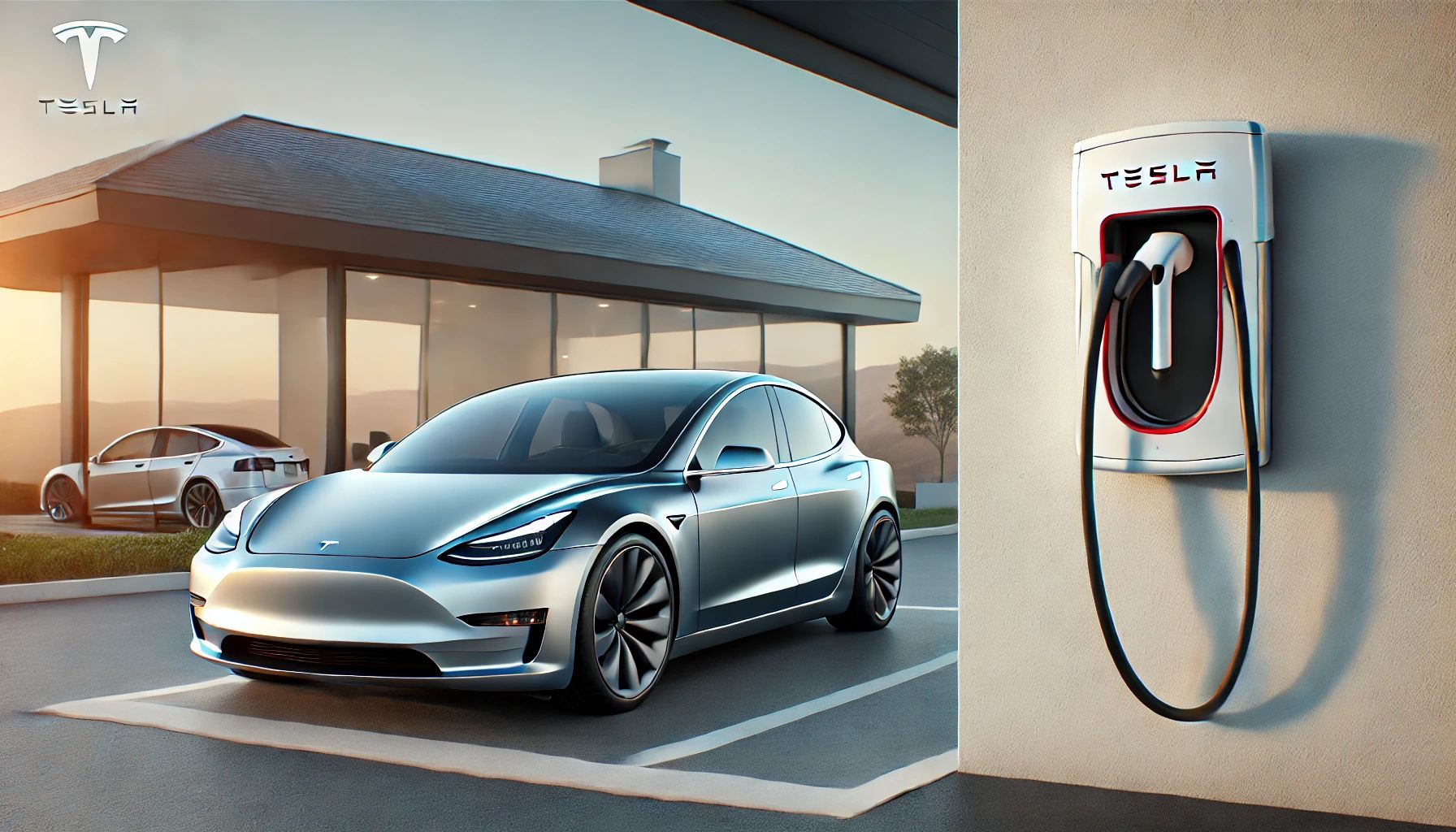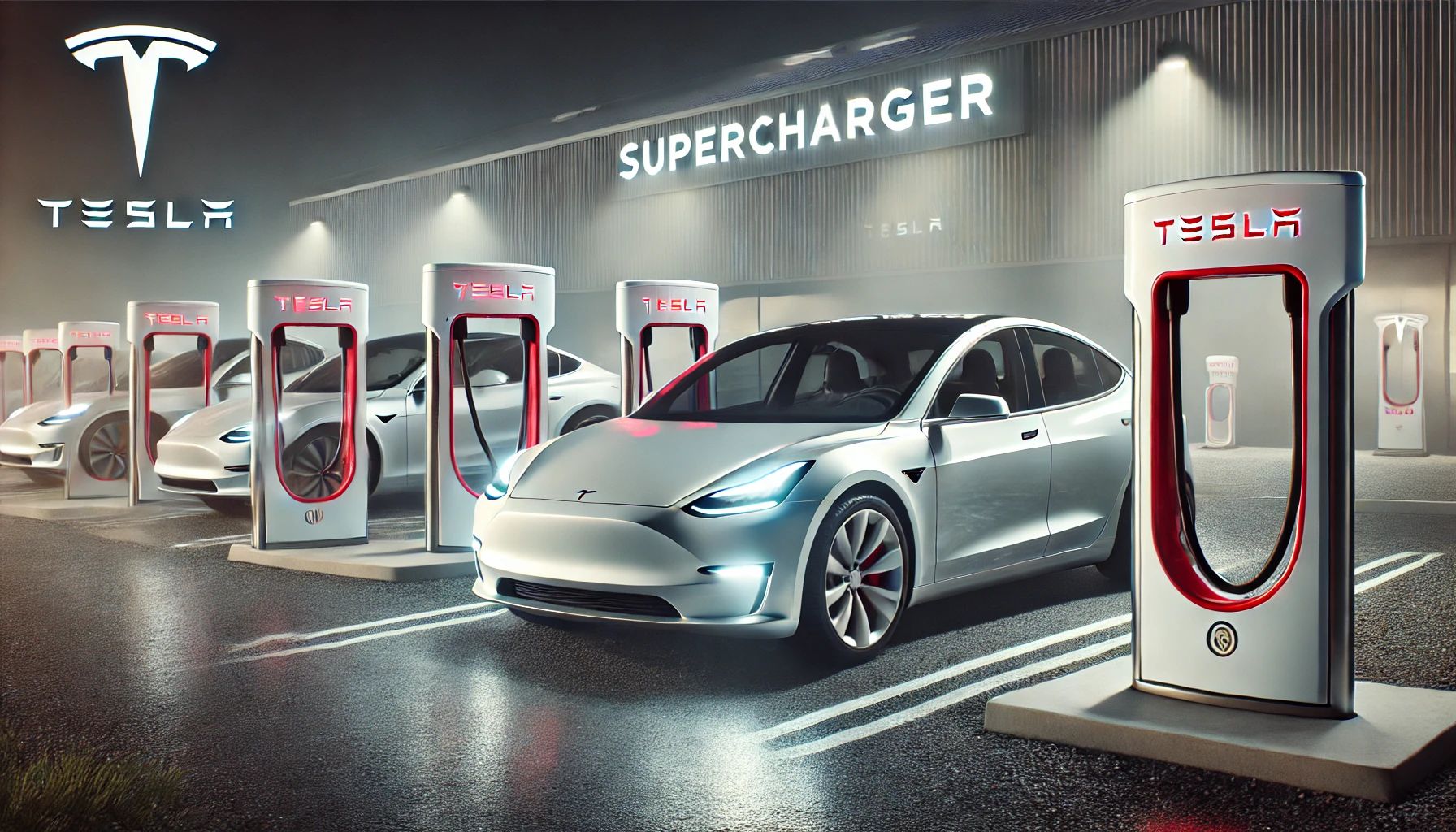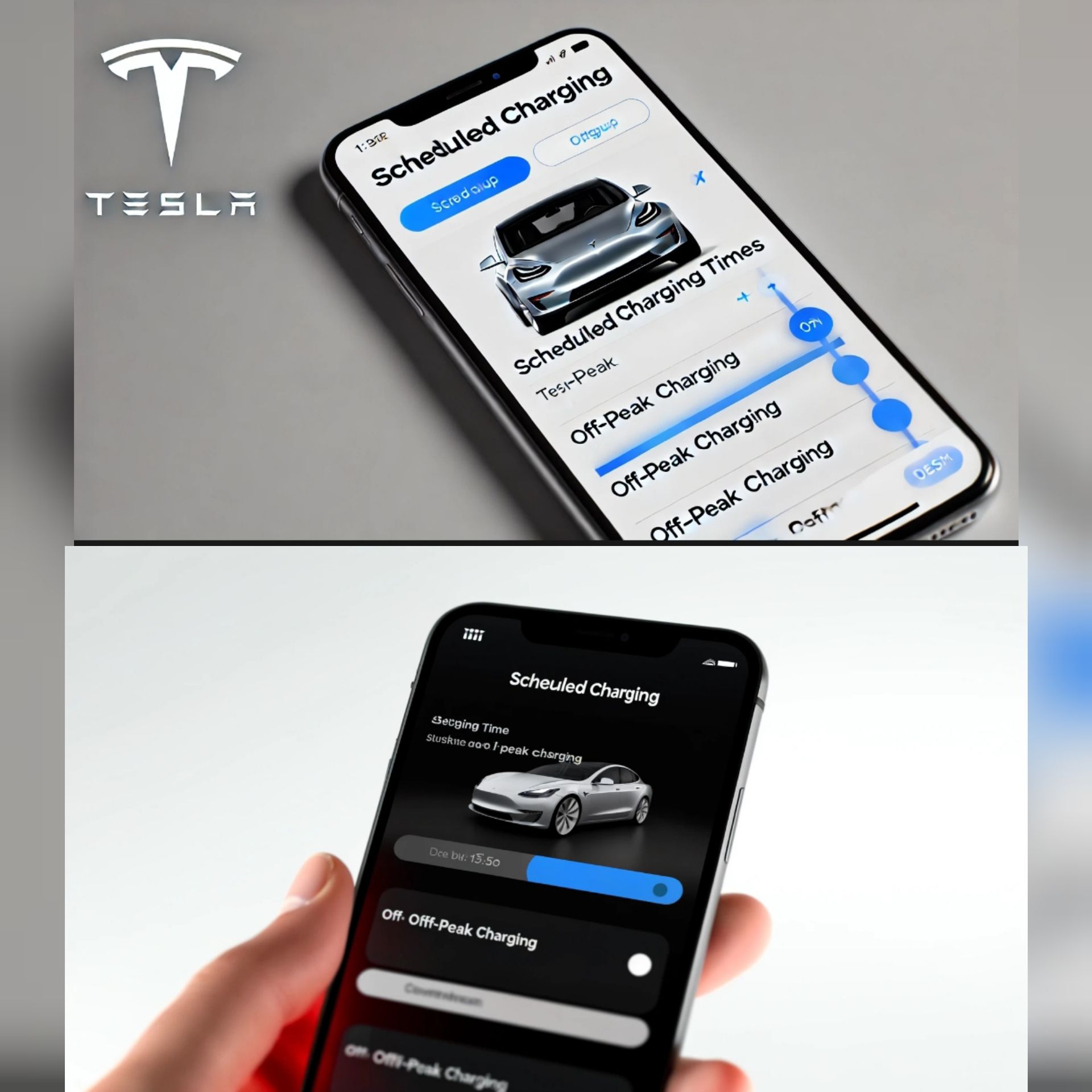Owning a Tesla offers the luxury of electric driving and the convenience of charging at home or on the go. However, to maximize your Tesla’s battery life and performance, it’s important to adopt the right charging habits.
Whether you’re a new Tesla owner or an experienced driver, following these best practices will ensure your battery stays in peak condition for years to come.
1. Don’t Always Charge to 100%
While it may seem like a good idea to keep your Tesla’s battery fully charged, doing so frequently can actually reduce its lifespan. Tesla recommends keeping your charge between 20% and 80% for daily use. This range is ideal for everyday driving and helps preserve your battery over time.
Scenario:
For typical commuting, you probably don’t need the full range of your Tesla. Charging to 80% is enough to get you through the day while maintaining your battery’s health. Save the 100% charge for long road trips where you need the extra range.
Tip:
Only charge to 100% when you know you’ll need the full battery capacity, such as before a long journey.
2. Use Home Charging for Daily Needs
Charging at home is one of the best perks of owning a Tesla. Using a Level 2 charger like Tesla’s Wall Connector allows for faster and more efficient charging compared to a standard outlet. For most Tesla owners, overnight charging at home covers their daily driving needs.
Scenario:
Imagine waking up every morning to a fully charged car without ever needing to stop at a station. Simply plug in your Tesla when you park at night, and by morning, it’ll be ready to go.
Tip:
If possible, install a Tesla Wall Connector at home to ensure fast and efficient charging overnight.

3. Limit Fast Charging to Occasional Use
While Tesla Superchargers are great for long trips, they shouldn’t be your primary charging method. Superchargers deliver high-speed charging but generate heat, which can wear down the battery over time. Reserve fast charging for times when you’re on the road and need a quick boost.
Scenario:
If you’re traveling and need to cover long distances, Superchargers will get you back on the road fast. However, for daily commutes, stick to home charging to avoid unnecessary wear on your battery.
Tip:
Frequent use of Superchargers can accelerate battery degradation. Use them sparingly and only when necessary.

4. Avoid Letting the Battery Drop Too Low
Just as charging to 100% too often can reduce battery life, allowing your battery to drop below 10% consistently can also be harmful. Try to keep your Tesla’s charge above 20% to prevent unnecessary strain on the battery.
Scenario:
If your battery dips below 20%, plug it in at your earliest convenience. Letting it drop too low frequently can lead to reduced battery health over time.
Tip:
Avoid deep discharges. Keep your battery level between 20% and 80% for optimal health.
5. Charge in Moderate Temperatures
Extreme temperatures, whether hot or cold, can affect the charging performance and overall health of your Tesla’s battery. If possible, charge your car in a temperature-controlled environment, such as a garage, to help maintain battery efficiency.
Scenario:
In the winter, charging in an unheated garage may cause the charging process to slow down, as your Tesla will need to use extra energy to heat the battery before it can charge effectively. In the summer, high heat can increase battery wear during fast charging.
Tip:
Whenever possible, charge your Tesla in a shaded or temperature-controlled area to avoid stressing the battery in extreme weather.
6. Use Scheduled Charging
Tesla’s Scheduled Charging feature allows you to set your car to start charging at a specific time, which is especially useful if your home electricity plan offers off-peak rates. Scheduled Charging not only helps you save money but also ensures your car is ready when you need it.
Scenario:
Set your Tesla to start charging at midnight, when electricity rates are lower, and have it fully charged by the time you wake up in the morning.
Tip:
Take advantage of off-peak electricity hours to save money on your charging costs.

7. Precondition the Battery Before Charging in Cold Weather
Preconditioning your battery before charging in cold weather ensures that your Tesla’s battery reaches the optimal temperature for charging, making the process more efficient. You can activate this feature through the Tesla app.
Scenario:
On cold winter mornings, use the Tesla app to precondition your battery before plugging it in. This will warm the battery and allow it to charge more efficiently, even in freezing temperatures.
Tip:
Precondition your battery in advance, especially during cold weather, for faster and more efficient charging.
8. Monitor Your Battery Health
Tesla provides built-in tools to help you monitor your battery’s health and performance. Keep an eye on any changes in your car’s range or charging performance. If you notice any significant drops in range, it may be worth contacting Tesla for a check-up.
Scenario:
If you notice that your Tesla’s range has decreased significantly after a charge, it could be a sign of battery degradation. Monitoring these changes allows you to take early action if needed.
Tip:
Use the Tesla app to track your car’s range over time and look out for any unusual dips in performance.
9. Don’t Stress Over Occasional Full Charges
While it’s best to avoid charging to 100% regularly, don’t worry too much if you occasionally need to fully charge your battery. Tesla’s battery management system is designed to protect your battery, and an occasional full charge won’t cause significant harm.
Scenario:
If you’re preparing for a long road trip, charging to 100% for the extra range is fine. Just avoid doing this frequently for short daily trips.
Tip:
An occasional 100% charge is okay, especially for road trips. Just don’t make it a habit for daily use.
10. Plan for Long Trips in Advance
When embarking on a long road trip, use Tesla’s Trip Planner or the in-car navigation system to map out your charging stops. Tesla’s network of Superchargers is extensive, but it’s always a good idea to plan ahead to avoid range anxiety.
Scenario:
Before hitting the road, input your destination into Tesla’s navigation system. It will automatically calculate where you should stop to charge along the way and how long each charge will take.
Tip:
Plan your charging stops ahead of time using Tesla’s Trip Planner for a stress-free road trip experience.
Conclusion
By following these best charging practices, you can extend the life of your Tesla’s battery, improve its efficiency, and ensure you’re getting the most out of your electric vehicle. Whether it’s keeping your charge between 20% and 80% for daily use or planning for long trips with Tesla’s Supercharger network, adopting these habits will help you keep your Tesla running smoothly for years to come.
Frequently Asked Questions (FAQ)
Battery Health and Longevity
- How can I make my Tesla battery last longer?
To extend the life of your Tesla battery, avoid charging to 100% frequently and try to keep the charge level between 20% and 80%. Limit fast charging and avoid letting the battery drop below 10%.
- Is it necessary to charge my Tesla to 100% once a week?
No, it’s not necessary to charge your Tesla to 100% weekly unless you’re planning a long trip. Regularly charging to 100% can degrade the battery faster. - Does charging to 80% increase battery life?
Yes, keeping your charge at 80% rather than 100% for daily use can help preserve your battery’s health over time. - Why shouldn’t I charge my Tesla battery to 100% every time?
Charging to 100% puts more strain on the battery, which can cause it to degrade more quickly over time. It’s best to reserve 100% charges for long trips where you need the full range. - How low should I let my Tesla battery get before charging?
Ideally, you should avoid letting your battery drop below 20%. Regularly running the battery down to very low levels (below 10%) can negatively impact battery health.
Charging Practices
- What’s the best way to charge a Tesla at home?
The most efficient way is to use a Level 2 home charger, such as Tesla’s Wall Connector. Set the charge limit to 80% for daily use to protect the battery’s longevity.
- How often should I charge my Tesla?
You don’t need to charge it every night unless you’ve used a significant amount of battery during the day. Charging every few days is fine for most drivers, depending on your driving habits. - Should I charge my Tesla every night?
You don’t have to unless you have driven a long distance. As long as the battery is above 20%, charging every night isn’t necessary. - Is it okay to leave my Tesla plugged in overnight?
Yes, it’s perfectly fine to leave your Tesla plugged in overnight. The car will stop charging once it reaches the set limit, and Tesla’s battery management system ensures it won’t overcharge.
Fast Charging and Superchargers
- How often should I use Tesla Superchargers?
Superchargers are designed for long trips and should be used occasionally. Frequent use of Superchargers for daily charging can lead to faster battery degradation due to the heat generated during fast charging.
- Is fast charging bad for Tesla’s battery?
Using fast charging regularly (like Tesla Superchargers) can heat up the battery and cause it to degrade faster over time. It’s best to limit fast charging to when it’s necessary, like during road trips.
Charging Efficiency
- What’s the most efficient way to charge a Tesla?
The most efficient way to charge your Tesla is to use a Level 2 charger at home and keep your charge limit set between 20% and 80%. Scheduled charging during off-peak electricity hours can also save you money.
- How can I optimize charging times?
You can optimize charging by setting a schedule to charge your Tesla during off-peak hours when electricity rates are lower. Tesla’s Scheduled Charging feature allows you to control exactly when the car starts charging. - Does temperature affect Tesla’s charging performance?
Yes, extreme cold or hot temperatures can affect charging performance. In cold weather, the battery may take longer to charge, and in hot weather, fast charging can lead to battery overheating.
Long Trip and Road Charging
- Should I charge my Tesla to 100% before a long trip?
Yes, for long trips where you need the full range, charging to 100% is fine. However, avoid doing this regularly for short trips, as it can cause battery wear over time.
- How do I plan charging stops on a long trip?
Tesla’s Trip Planner in the navigation system will automatically calculate charging stops based on your route and distance. The Tesla app also provides access to nearby Superchargers. - How often should I charge on a road trip?
It’s best to follow Tesla’s Trip Planner or use the in-car navigation system to find optimal charging stops. Superchargers are spaced out to ensure you can charge every few hours during long journeys.